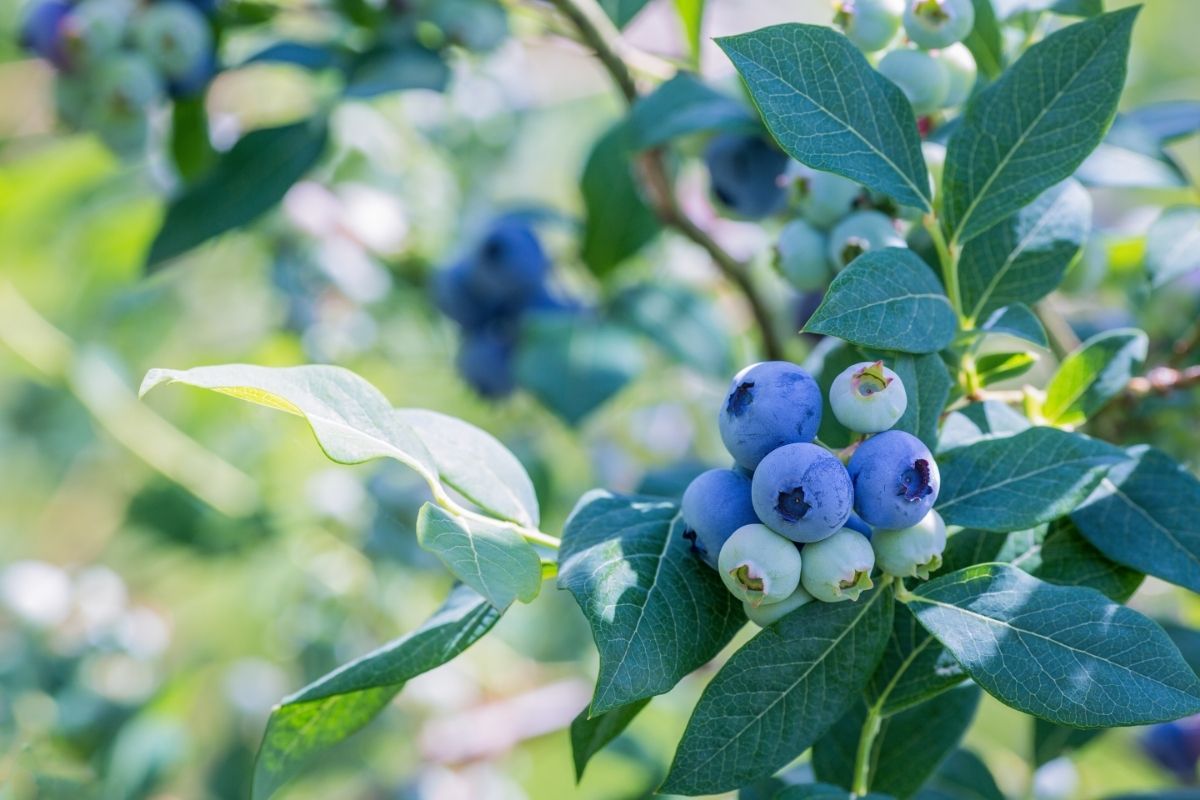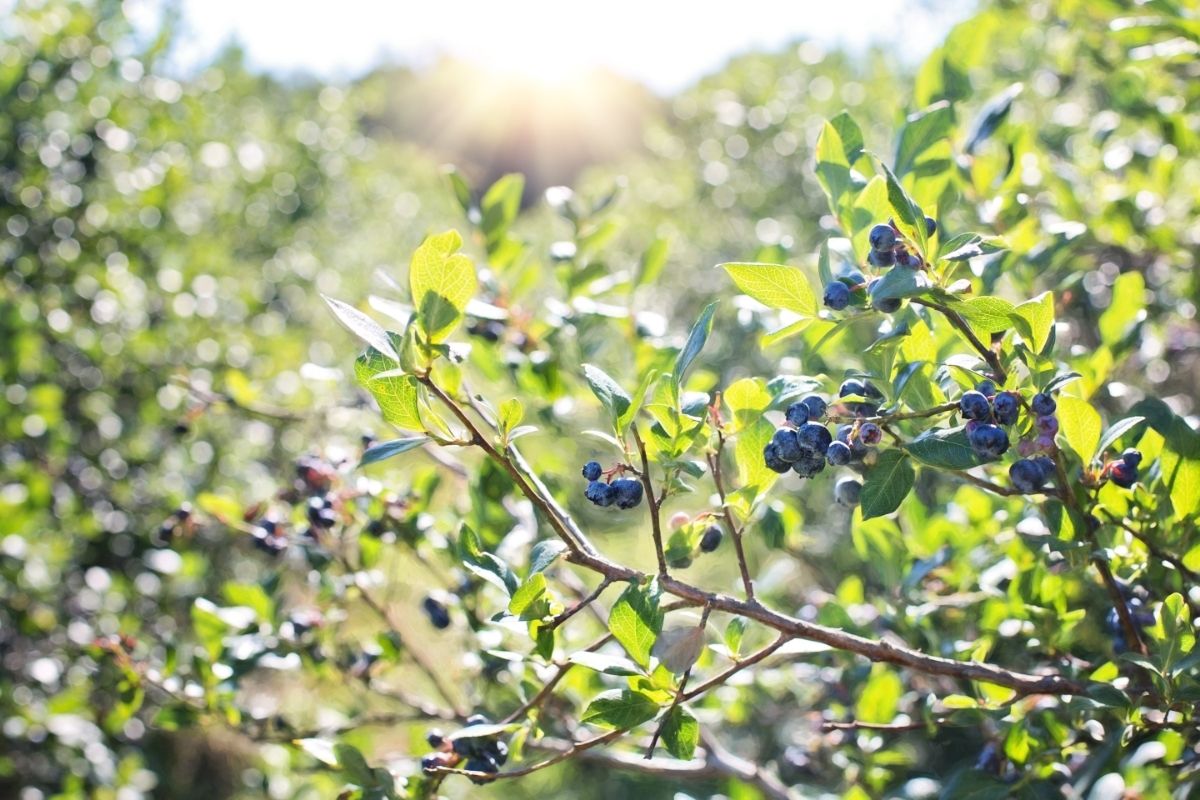Blueberry plants are super hardy and easy to grow. They also produce delicious fruits! Pruning at least once a year is the most effective way to guarantee that your plants produce a lot of fruit in the next growing season. Keep reading to find out how to prune blueberries, and to discover why proper pruning is so important.

Why Do I Need To Prune My Blueberry Bush?
We all know that pruning is essential for some plants, but why is it so significant for blueberries? Well, there are a couple of reasons why blueberries benefit from a little cut back now and again.
Firstly, like with any other plant, pruning will help encourage new growth and new leaves which will increase the blueberry yield in the next growing season.
You will also be encouraging your blueberry plant into good growth habits.
This just means that pruning will open up your plant enough that air circulation and sun exposure is improved, reducing the likelihood of your blueberries catching a disease.
You should also view the pruning season as the ideal time to get rid of any dead or damaged branches.
Remember – any damage to your plant is the perfect invitation for all sorts of harmful bacteria that could kill your plant.
Removing damage will help your blueberry plant streamline its resources. With no dead weight to try to fix, your plant can focus on producing excellent quality blueberries.
While you are pruning your plant, you must remember the core purpose of pruning. You should trim to remove enough of the old plant that new growth is encouraged.
This needs to be done in such a way that you are not negatively impacting the overall health of your plant.
When Should I Prune My Blueberry Bush?
The pruning season for blueberries is from the middle of winter to the very beginnings of spring – basically the same time as almost all fruiting trees and shrubs.
Pruning in the winter makes it easier to see the core structure of your plant, allowing you to better identify what does and does not need to go.
An added benefit of pruning while your plant is dormant is that it is under significantly less stress than it would be during the spring or summer.
This is because your plant is not actively growing in winter, so you are not depriving your plant of essential food-producing leaves.
You should not be overly concerned about your blueberry plant during the winter – they are very hardy! Some varieties can survive temperatures below -30 °F (-34 °C) and cold weather is essential for the flower buds as they develop.
Without winter, you won’t have blueberries.
So, while you can prune your blueberries from late December onwards, it is not recommended that you do so until later in the year.
Late February is the ideal time as you will be able to prune as you would have done earlier in the year, but you can also take away any branches that got damaged by snow, frost, or winds and rain.
How Do I Prune Different Types of Blueberry Bushes?
There are so many varieties of blueberry bushes that you are guaranteed to find one that suits the climate of your area.
You could go for a high bush plant, low bush, or even rabbiteye. Want something different? You can pick up hybrids all over the country!

Generally, though, the half-high bush variety is the most popular. This is a hybrid plant of the high and low bush varieties and combines many of their best qualities.
It grows around 4 feet (1.2 m) high and is just as wide, producing lots of fruit.
If, however, you are living in a warmer climate with a fairly mild winter, you should consider the rabbit eye variety. These do not tolerate the cold as well and fair better in warmer environments.
One thing to remember is that you will need to combine varieties to maximize fruit yield. Do your research to find the perfect pollination partner for your blueberries, especially if you do not have a high bee population in your area.
You can mimic the role of bees and other pollinators by painting the flowers with a clean paintbrush. But this is time-consuming so is best left to mother nature!
But, no matter what type of blueberry plant you go for, the process of pruning will always be the same. This makes caring for your blueberries easier!
RELATED: Nature is Sweet As! 10 Different Types Of New Zealand Trees
How To Prune Blueberries?
As all blueberry plants can be pruned in the same way, follow these steps for the best results.
How to prune:
- Take a moment to properly look at your plant and identify any dead or damaged branches. These will need to be cut away first. Cut all dead or damaged stems off where they fork away from the main branch. Try to avoid leaving a stump as this could allow disease to get in. Cut any completely dead branches off at the soil level.
- Now you need to remove any branches that are interfering with each other. Start with branches that are rubbing against something, then move onto branches that cross over each other. Be sure to cut as close to the main branch as possible. You are aiming to create a plant that is open and has no overlaps or crossing branches.
Now your technique will need to change depending on your plant.
If you have a well-maintained blueberry plant or one that is young, you need to prune so that you have removed a third of all branches.
Cut down to the ground to remove these branches and try to target very thick or older branches as much as possible. This will encourage as much new growth as possible.
A more mature or unkempt blueberry plant needs to be treated a little more harshly. Cut half of the branches down to the ground.
Again, be sure to target old or thick branches for the best rejuvenation – new canes will grow and these are far more productive.
Over the next couple of years, you can take away all the old branches. This will mean that your blueberry plant will be as fruit-bearing as possible in a few growing seasons.
Remember that a plant that is heavily pruned will take a few years to get back to its peak performance!
Pruning may feel excessive, especially when you are cutting back to the soil! But don’t worry. Pruning annually will keep your blueberries coming year-on-year. Don’t forget to do it!
Quick Tips
- Do not over-shape your blueberry plant. Trimming into a ball shape will limit the surface area for potential growth and flowering. This means you will not get a lot of fruit.
- Pruning at least once a year will help make sure that new branches are constantly in development. These produce more fruit than old branches.
- Make sure that your shears are clean and sharp. This will limit trauma to your plant and prevent the spreading of disease.
After Pruning
After you have pruned your blueberry plant, it will benefit from some added help to generate new branches and buds again.
Once spring hits, you can fertilize your blueberry plant. Use some acidic organic fertilizer – we recommend granular for the best results.
Make sure that you follow the manufacturer’s instructions and dilute to the correct quantities for the best results!
You could also do some mulching. Use one or two inches of leaves, shredded bark, or some pine straw for some additional nutrients and protection from animals and the elements.
But remember that you can have too much of a good thing, so you must not over-mulch. This could damage the root system by weighing down the delicate and fibrous roots.
Final Thoughts
Pruning your blueberry plant regularly is super important to keep your plant healthy, tidy, and producing a bountiful fruit harvest.
When doing the annual prune, you may feel that you are being harsh or harming the plant. Don’t worry! Removing a third or half of the branches to the ground will encourage new branch growth – remember that new branches will produce the most fruit.







